Fish Passage Restoration Program
Opening the best habitat to the most salmon as quickly as possible
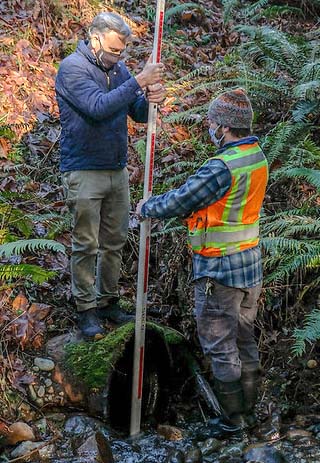
One of the most effective ways to ensuring the survival of native salmon – and the southern resident orcas that rely on them as a food source – is to remove barriers to their habitat.
We’re working with our partners to remove barriers to habitat that exist on land where we are the stewards, which includes replacing culverts that were built under county-owned roads and trails but now block salmon from swimming upstream.
Under the direction of King County Executive Dow Constantine, we’ve increased funding to support work by county divisions – Water and Land Resources, Parks, Roads, and Permitting – to restore access to high-quality habitat at a faster pace. We’re also improving the planning, design, and construction of projects to improve the final project and get projects built absolutely as fast as possible. Yet we must accelerate our efforts before it is too late for native salmon populations that have been important to the way of life here since time immemorial.
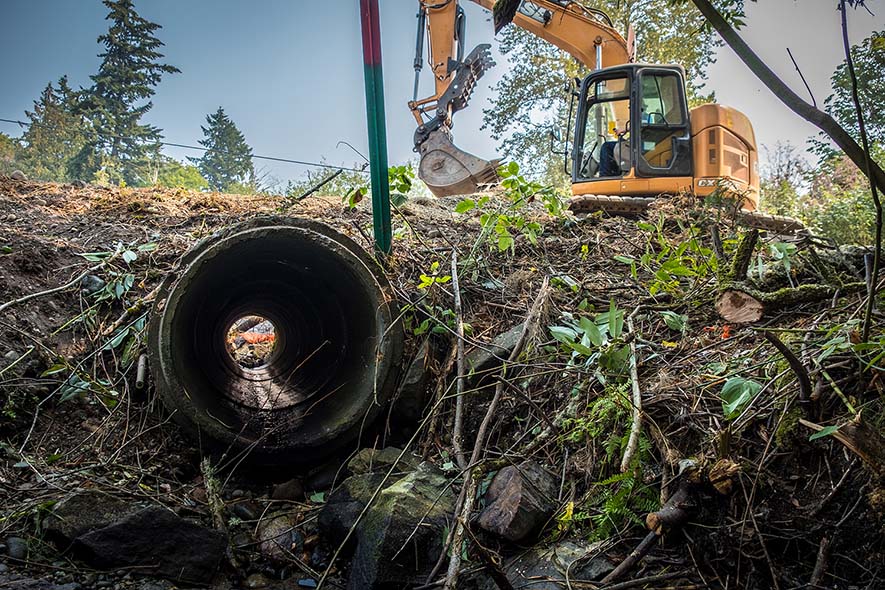
Working to fix fish passage barriers
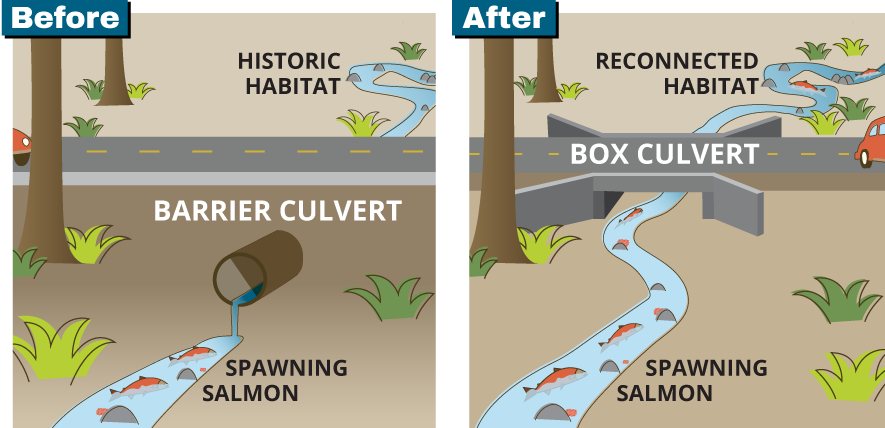
Prioritizing which barriers to remove first to achieve the best results
Using data from the inventory and assessment of county stream crossings, we’ve worked with Tribes, federal and state agencies, and cities to develop a methodology that prioritizes which barriers should be removed first to achieve the best results for fish.
Our data analysis considers both the quality and the amount of fish habitat that could be restored if a specific barrier is removed.
Focusing county work on restoring fish passage at the barriers that block the most and best habitat can vastly increase the amount of habitat opened up in the next 30 years. Analysis indicates that correcting the barriers that block the most habitat first can provide many times the habitat gain compared to removing barriers in a random order.
The field team of experts inspected more than 3,000 locations where habitat is possibly blocked by county-owned roads and trails. They ranked more than 700 of the identified barriers and determined that completing 50 restoration projects would restore access to at least half of the habitat that is currently blocked by county structures that block salmon from swimming upstream. The county is developing plans to complete this work in the next 10 years.
Over the longer term, the prioritization work estimates that restoration of fish passage at about 150 of the top priority county barriers could restore salmon access to at least 90 percent of the habitat that’s currently blocked.
- King County Fish Passage Barrier Prioritization Summary Report (743 KB), June 2022
- GIS data for the King County fish passage barrier inventory and prioritization
Disclaimer: Fish Passage GIS data has been compiled by King County staff from a variety of sources and is subject to change without notice. King County makes no representations or warranties, express or implied, as to accuracy, completeness, timeliness, or rights to the use of such information.
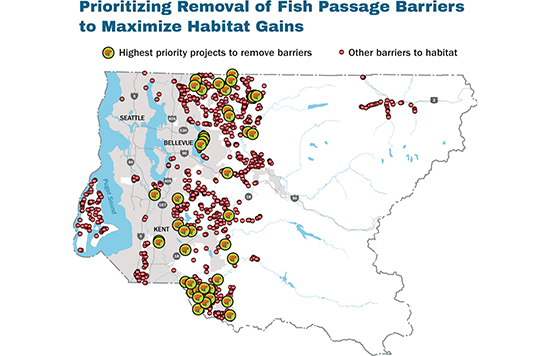
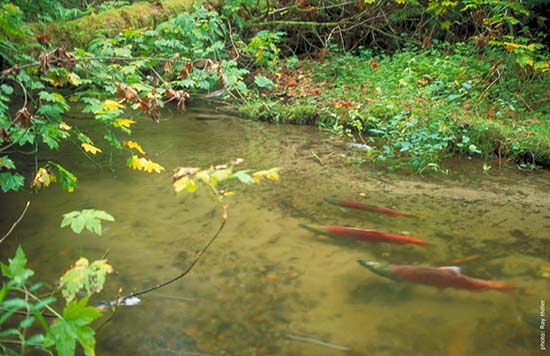
Early action to produce results sooner
Starting in the 2019-2020 budget and continuing into the budget for 2021-2022, Executive Constantine has directed more than $20 million to move forward on dozens of projects that will connect to salmon to more than 150 miles of high-quality habitat. In addition to planning and design work on many projects, the county plans to complete construction that restores fish passage at 16 barriers between 2019 and the end of 2022.
The evolving 10-year work plan for fish passage estimates that restoring salmon access to at least half of the habitat currently blocked by county barriers will require an investment of about $150 million.
Key to the effort will be work to get the most habitat value from investments in fish passage. This includes taking advantage of innovative methods and opportunities to standardize common tasks and designs. We’re also exploring options to close the gap between the current funding and the amount of funding we’ll need. Possible funding and financing options include:
- Maximizing grant funding;
- Regulatory flexibility to allow transfer of limited public funding to high priority fish passage restoration projects when repairing or replacing barrier culverts with little upstream salmon habitat;
- Public-private partnerships; and
- Public funding options like future levy proposals and bonds that require voter approval.
The inventory and prioritization will make King County highly competitive for local, state, and federal grants – including the federal Bipartisan Infrastructure Bill – that fund projects to restore access to high-quality habitat, which is critical to the survival of native salmon and southern resident orcas that rely on them as a food source.
Read the reports
News and announcements
Oct. 6, 2022
External article, Seattle Times
Buttigieg wades into Northwest salmon transportation
Download the King County Fish Passage GIS Data!
Aug. 16, 2021
A united effort to remove barriers to salmon habitat
May 16, 2021
External article, Seattle Times
King County’s culvert hunters — and a $9 billion plan to save salmon habitat
Feb. 26, 2021
Field team inventories 3,000 potential barriers to fish habitat .
Nov. 6, 2020
Downstream News
New King County road across Mary Olson Creek improves transportation for people and salmon
Oct. 23, 2020
External article, Seattle Times
WSDOT tries a ‘bridge-in-a-backpack’ in Duvall as an innovative way to replace fish-blocking culverts
Sept. 27, 2019
The fish passage field team is at the frontline of King County’s effort to protect and restore salmon habitat
Jul. 31, 2019
External report, KOMO News
State investing $25 million to remove culverts for salmon migration
Dec. 18, 2018
Emergency and long-range actions to ensure the survival of native kokanee salmon
Related information

The right investments at the right time in the right places.

 Translate
Translate